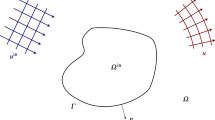Abstract
The usual time domain Boundary Element Method (BEM) contains fundamental solutions which are convoluted with time-dependent boundary data and integrated over the boundary surface. If the fundamental solution is known, e.g., in Elastodynamics, the temporal convolution can be performed analytically when the boundary data are approximated by polynomial shape functions in time and in the boundary elements. This formulation is well known, but the resulting time-stepping BEM procedure produces instabilities and high numerical damping, when the time step size is chosen too small and too large, respectively. Moreover, in case of viscoelastic or poroelastic domains, the fundamental solution is known only in the frequency domain such that the time history of a response can only be obtained by an inverse transformation of the frequency domain results.
Here, a new approach for the evaluation of the convolution integrals, the so-called “Operational Quadrature Methods” developed by LUBICH, is presented. In this formulation, the convolution integral is numerically approximated by a quadrature formula whose weights are determined by the Laplace transform of the fundamental solution and a linear multistep method. Hence, the frequency domain fundamental solution can be used without the need of an inverse transformation. Therefore, the extension to viscoelastic problems succeeds using the elastic-viscoelastic correspondence principle.
Similar content being viewed by others
Author information
Authors and Affiliations
Rights and permissions
About this article
Cite this article
Schanz, M., Antes, H. A new visco- and elastodynamic time domain Boundary Element formulation. Computational Mechanics 20, 452–459 (1997). https://doi.org/10.1007/s004660050265
Issue Date:
DOI: https://doi.org/10.1007/s004660050265




